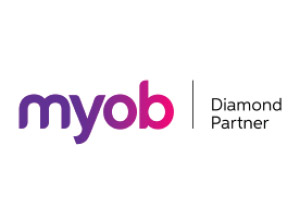The role of nearshoring to gain control of the supply chain
Move the supply chain closer to home to see efficiency improvementsMatching supply and demand is an ongoing challenge for inventory-based organisations. Ideally, you need to be one step ahead of the customer’s needs, having the right stock on hand at the right time. Inventory managers know well the careful balance that needs to be struck. Too much stock, and you tie up capital that could be better spent elsewhere. If there is too little stock, you risk losing customer sales as they deplete your inventory.

Netstock Inventory optimisation built for powerful simplicity Brochure
Download nowThe risk of importing stock from overseas
To secure the best margins, many suppliers and wholesalers look to overseas producers for their goods. China presents an attractive option with a mix of price and quality benefits. However, there are a range of factors to consider when importing stock from overseas:
- Lead times – how quickly will the stock order arrive,
- Container volumes – are your orders making the most efficient use of shipping costs,
- Currency fluctuations – many overseas manufacturers prefer to be paid in USD, tying your margin to conversion rates,
- Import tariffs – can vary depending on container size and industry,
- Reliance on overseas shipping – which can be expensive and heavily impacted by delays.
These risks can compromise your stock balance, as well as profit margins and customer satisfaction.
Looking at global importing trends
American businesses have continued to trend away from Chinese suppliers and are procuring stock from closer to home. According to Netstock’s Inventory Management Benchmark Report, only 25% of US businesses prefer offshore suppliers to domestic. Australian and New Zealand organisations follow a similar trend.
How to mitigate offshore import risks
Mitigating the risks of importing inventory from overseas suppliers and manufacturers involves strategic planning and proactive measures. There are a range of steps that you can take to limit the risks:
- Maintain a level of safety stock to limit the risk of stocking out. Usually, the amount of stock you would sell in the lead time period before an overseas order arrives.
- Negotiate a Forward Exchange Contract (FEC) to lock in currency exchange rates for longer periods of time and add more reliability to your profit margins.
- Track unit, carton, pallet, and container volumes for efficient container-based shipping. Your ERP system can be a storage hub for this information.
- Investigate “nearshoring” or diversifying to more local suppliers.
The growing trend of nearshoring
Nearshoring reduces pressure on your supply chain and reduces the risks that come from longer overseas lead times. Long and variable supplier lead times are one of the most significant challenges affecting inventory-based organisations. Bringing your supplier closer to your warehouse will mitigate this challenge.
In terms of overseas suppliers, Australian and New Zealand organisations are turning to Southeast Asian countries such as Vietnam, Indonesia, and Malaysia.
The benefits of nearshoring are:
- Decreased transportation costs from the shorter distance,
- Shorter lead times – giving you more flexibility with safety stock levels and, as a result, a lower value of inventory carried,
- Competitive labour costs compared to Chinese manufacturers.
- Smaller carbon footprint from shorter shipping channels, improving sustainability
- Lower risk of disruptions from a non-major shipping channel/port
From nearshoring to onshoring
To completely avoid the risks that come with overseas shipping, look to local manufacturers. While domestic options may appear to be the most expensive, they come without expensive international shipping, tariffs, disruption risks, and more. Furthermore, the benefit of short lead times means your safety stock number can be even smaller, further improving agility and flexibility. Reducing your safety stock inventory value by 1% can lead to significant cash flow improvements.
Making sense of supply chain and inventory changes
Both financial and non-financial inventory information are incredibly important to capture and analyse. Sales and profit margins, to stock on hand, container size, and lead time are all important pieces of the inventory puzzle. Using an advanced inventory management tool like Netstock takes the key data from your integrated business management platform and automatically calculates safety stock levels to improve supply chain management.
If you need any more information on Inventory Management Software, stock-outs, or Netstock, call 1300 857 464 (AU) or 0800 436 774 (NZ) or send an email to sales@kilimanjaro-consulting.com.
























